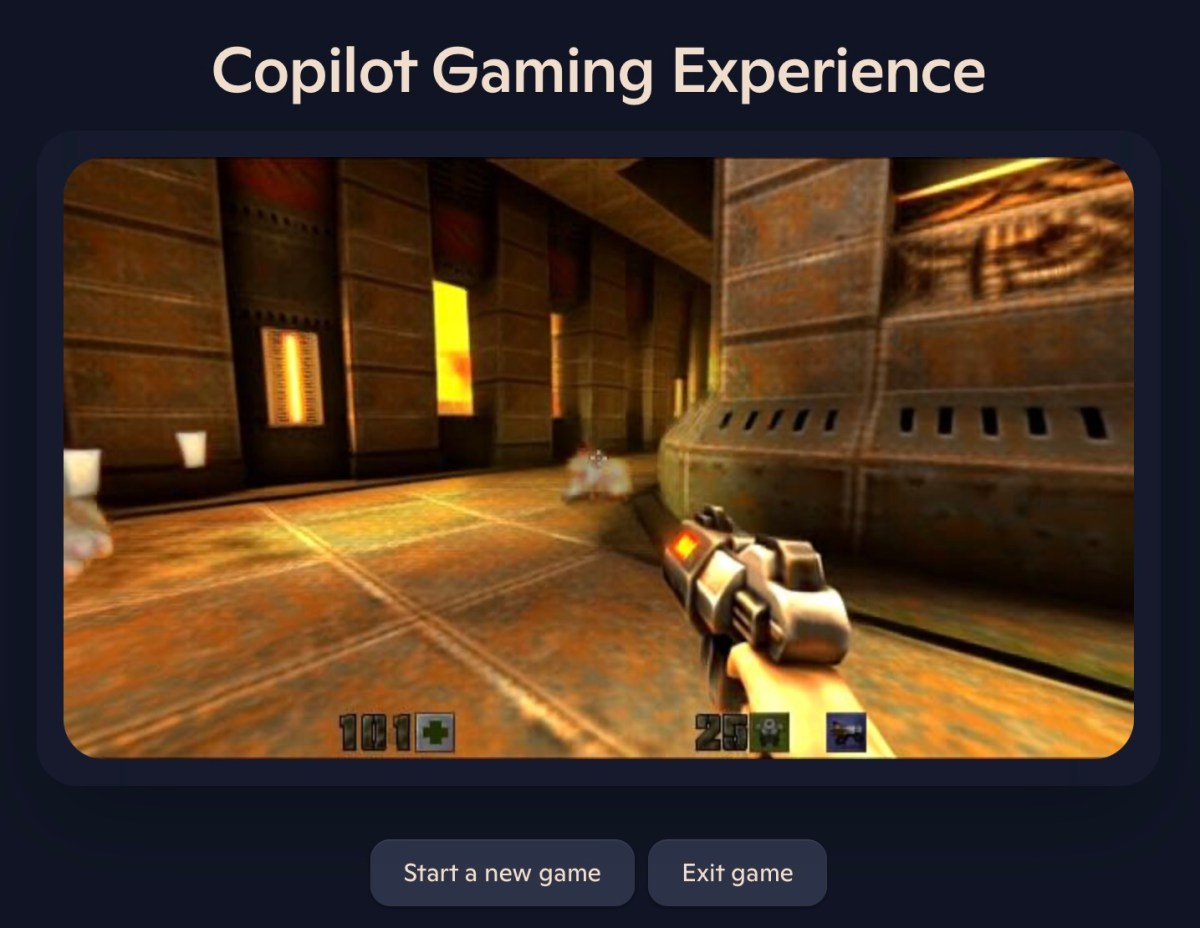Microsoft has unveiled a browser-based, interactive version of a classic Quake II level, serving as a technological demonstration of the gaming capabilities of its Copilot AI platform. Although the company acknowledges that the experience is not identical to playing a well-crafted game, it still offers a glimpse into the potential of AI-driven gaming.
You can experience it for yourself, navigating a single level of Quake II using your keyboard for a limited time before reaching the time limit.
In a blog post detailing their research, Microsoft’s researchers explained that their Muse family of AI models for video games enables users to interact with the model through keyboard or controller actions, observing the effects of their actions in real-time, effectively allowing them to play within the model.
To showcase these capabilities, the researchers trained their model on a Quake II level, which Microsoft acquired through its acquisition of ZeniMax.
The researchers noted that they were initially thrilled to be able to play within the simulated world, allowing them to move around, control the camera, jump, crouch, shoot, and even blow up barrels, similar to the original game.
However, they emphasized that this is a “research exploration” and should be viewed as “playing the model” rather than playing the actual game.
The researchers acknowledged certain limitations and shortcomings, including fuzzy enemy textures, inaccurate damage and health counters, and the model’s struggle with object permanence, where objects are forgotten if they are out of view for 0.9 seconds or longer.
According to the researchers, these limitations can also be a source of entertainment, as players can exploit them to defeat enemies or spawn new ones by looking away and then back, or even teleport across the map by looking up at the sky and then back down.
Game designer and writer Austin Walker was less impressed, sharing a gameplay video where he spent most of his time trapped in a dark room. (Similarly, I experienced this issue both times I attempted to play the demo, although I must admit that I’m not skilled at first-person shooters.)
Referencing Microsoft Gaming CEO Phil Spencer’s recent statements that AI models could aid in game preservation by making classic games “portable to any platform,” Walker argued that this reveals a fundamental misunderstanding of the technology and how games function.
“The internal mechanics of games like Quake, including code, design, 3D art, and audio, produce specific gameplay instances, including unexpected edge cases,” Walker wrote. “This is a significant aspect of what makes games enjoyable. If you’re unable to recreate the key internal workings, you lose access to those unpredictable edge cases.”
Source Link





